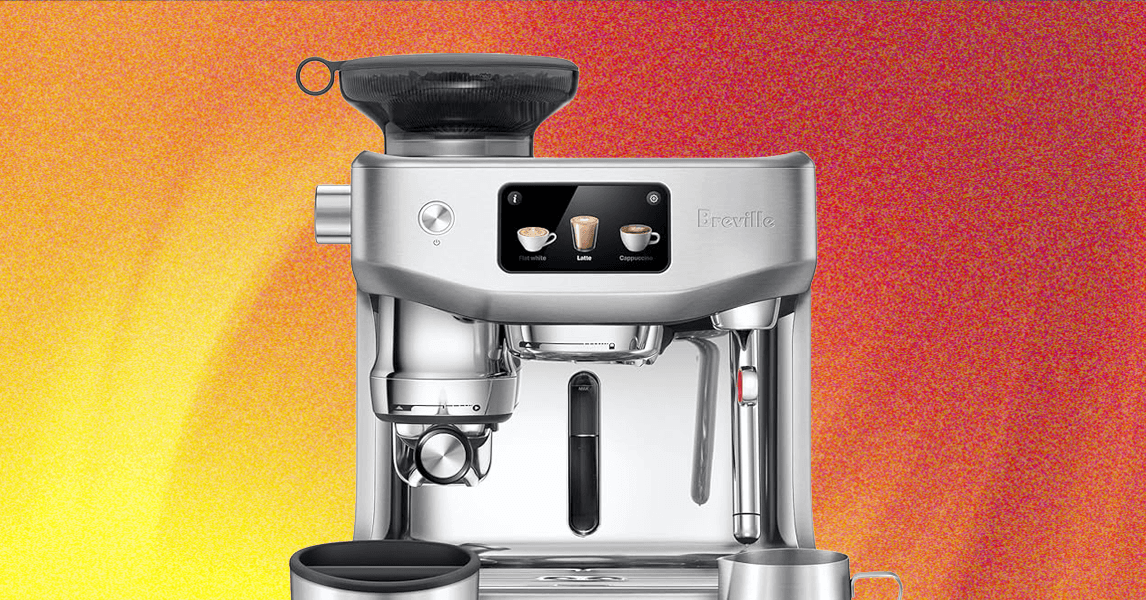The Oracle Jet incorporates the tablet computer interface from the Oracle Touch dual-boiler machine, but swaps out the slow-heating dual boiler for a pair of fast-heating ThermoJets that heat water at the steam spout of the brewing head—which means no more waiting for the machine to warm up.
Note that the Oracle Jet nonetheless performs better on its second or third espresso pull than its first. For ideal results, you may want to run an empty, no-coffee shot of hot water through the portafilter before your first espresso of the morning. The other trade-off is that you can’t steam milk and brew espresso simultaneously. You’ll instead have to froth milk beforehand, or wait 30 whole seconds to steam your milk while the espresso brews. In practice, this is a problem that’s not much of a problem.
Some upgrades have arrived even after the device came out, through a series of firmware upgrades that have added drinks or cleaned up functions. At this point, a year after the device’s release, each puck I prepped has been hearteningly on the level. Same goes for the volume controls on the water, which reportedly ran long before some firmware adjustments. On measurements over long manual espresso pulls, I’ve found the water temperature admirably stable.
The milk steaming wand is powerful, especially when frothing manually: You can get some serious bubbles and serious silkiness out of this thing. And, weirdly, the cold espresso is actually pretty good. It’s more like lukewarm than cold, a one-minute extraction at just above room temp. But if you dribble it over ice at an extra-fine grind setting, it’s a crema-topped, low-acid, cold espresso one might want to mix with either milk or vodka—depending on time of day and who you are. (The three-minute cold brew is a bit astringent and less successful to my taste.)
The device also has other little conveniences, like a handy purge function when swapping beans or making your first cup (double-tap the grinder icon and about 5 grams comes out). It has a removable water reservoir in the back, but you can also pour in water from the front of the machine. And there’s a little lever that’ll lower and raise the whole device, so it can roll around on wheels or stay put.
Does it all add up to $2,000? Depends on your budget and what you’re comparing it to. But it’s all quite nice, it looks nice, the espresso tastes nice, and it’s the sort of thing that inspires jealousy in houseguests.
The Usual Caveats
As with many heavily automated machines, there will be things you cannot easily change, and some specific quirks. The shot size is large by default, around 20 to 22 grams of coffee for a double shot. The easiest way to adjust this is by buying a smaller-dose 58-millimeter basket.
And while the Oracle Jet’s bean-assist function is quite useful for beginners, it’s not overly sophisticated. Mostly it recommends you go up or down by three twists of the grinder dial when changing drinks or if your shot is running long or short. You’ll probably find yourself turning this function off after a week or so. Those used to less automated espresso machines may also be irritated by the lack of a visible pressure bar: You’re assessing how well your shot’s pulling by flow rate, not pressure.

